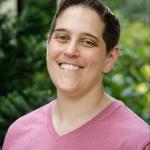
I will always remember my first experience listening to Jewish music. It was during the High Holy Days nearly a year ago. I had been looking at various temples for my conversion and watched a local synagogue’s YouTube channel to get a feel for what a service was like there.
Little did I know then, what I was watching wasn’t the normal Shabbat service, it was Rosh Hashana and a classically trained cantor had traveled from out of state to sing for the special occasion.
What I heard that day was nothing short of miraculous. It was a beautiful and spiritually moving experience that I’m sure would have been so much more intense had I heard it live at the synagogue. Although this wasn’t the normal service, I quickly learned through the conversion process that music can be found in nearly every aspect of Jewish life.
The Torah reading during the weekly Shabbat service is a musical experience. Prayers are sung along with traditional Hebrew Hymns called Zemirots. This music is festive, joyous, and spiritually moving but my experience only scratches the surface. Jewish music has been around for millennia and there is much more to it than meets the eye.
In this article, I will explore the role of music in Jewish life through the Torah reading, prayer, and traditional Hebrew hymns and look at how these traditions have evolved throughout the centuries.
Cantillation: Singing or Chanting the Torah
As someone new to the Jewish faith, I am in awe as the Torah is read during Shabbat services. Several synagogue members are called to come forward to take turns reading verses in Hebrew and there is a musicality to their reading. This is what is referred to as cantillation or trop. According to MyJewishLearning.com, cantillation began around 510 B.C.E during the time of Ezra shortly after the first temple was destroyed and the Jews returned from their Babylonian exile.
Ezra, a scribe and priest, observed that the Jews were no longer following the laws of the Torah and took control of the situation by reading the Torah during times when the community gathered: festivals, sabbaths, and market days. Without the luxury of amplification, Ezra devised a way to project over the loud hustle and bustle of the marketplace.
“Exaggerating the highs, lows, and cadences of normal speech, Ezra projected the holy texts in a style caught somewhere between speaking and full-blown singing.” ~Marsha B. Edelman
How the Torah is chanted has evolved since the days of Ezra. Modern-day Torah readings follow a system that uses notations and accents to determine how the text is chanted, adding musicality to the spoken word.
The Tradition of Nusah: Jewish Prayer
Prayers from the Siddur, a Jewish prayer book, are also sung. But, unlike Torah cantillation, there is no formal notation system for singing Jewish prayers. Instead there is a musical tradition called nusah which uses unique combinations of musical motifs depending on the type of service.
“These musical modes differentiate between one service and another. Weekday nusah has one set of tones, the Sabbath another, the holidays yet another, and the High Holy Days a completely different one. There is one tune for the Sabbath day and another for the conclusion of the Sabbath. These tunes reflect the mood of the time.” ~Rabbi Dr. Reuven Hammer
The melodies chosen are meant to fit the occasion and mood of the prayer that is being recited. Rabbi Dr. Reuven Hammer uses the example of the Kol Nidre sung on Yom Kippur. The words of the prayer do not necessarily evoke emotion on their own, but when combined with the melody, the result is a dramatically moving experience. Over time various factors have affected the evolution of nusah. They include the diaspora of the Jewish people and the additions of cantors in the 7th century.
Zemirot: The Hebrew Hymn
Zemirot, also known as Shabbat table songs are interwoven with cantillation and nusach during Shabbat services but, they are also sung at homes across the world throughout and after the sabbath meal on Friday nights. According to Ronald L. Heisenburg, the songs hail from the medieval period and are holy and secular. One of my favorite Zemirot is Shalom Aleichem which can be viewed at the link below:
https://www.youtube.com/watch?v=j-wAAtCvPnQ&t=10s
Music flows through nearly every aspect of Jewish life: prayer, Torah reading, and traditional hymns all of which have grown and involved over thousands of years. These musical traditions fortify us as a community, connect us to the divine, and provide a compass that guides us through our daily lives. May we continue to sing and dance to the rhythm of Jewish life for the rest of our days. Shalom my friends.


















